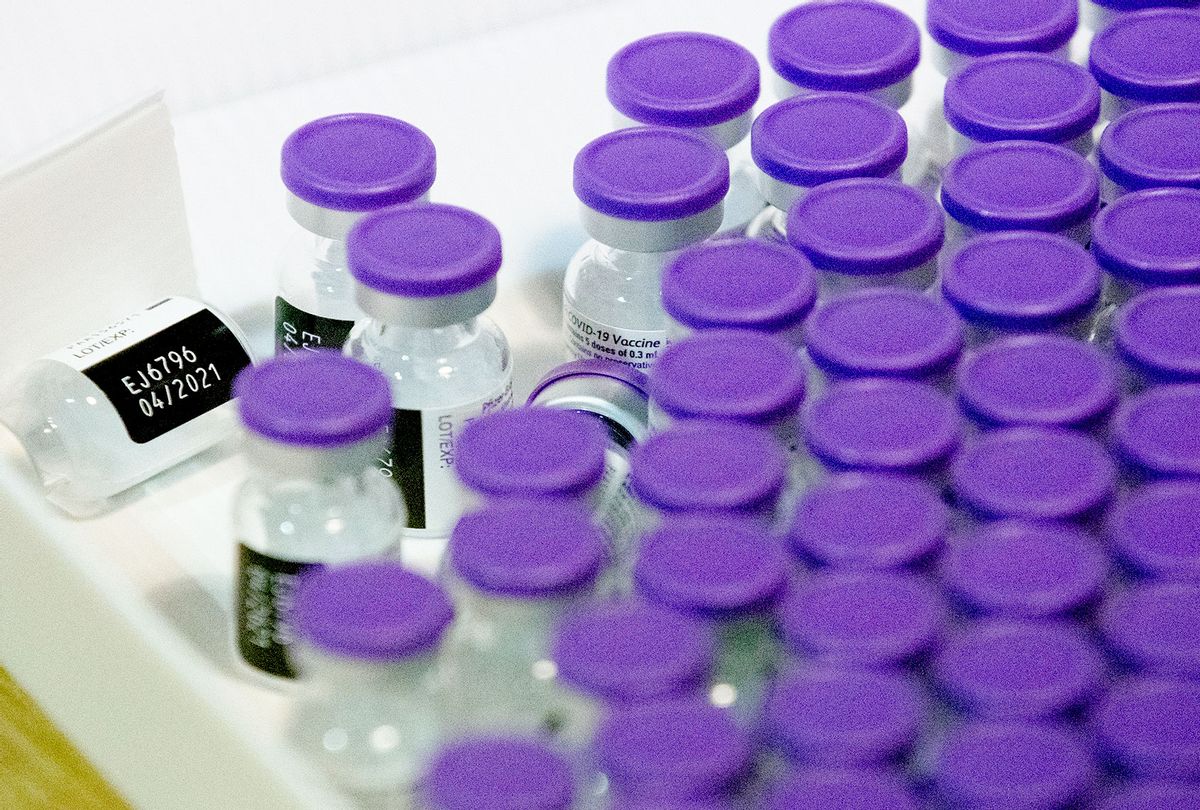On September 20, Pfizer announced that the COVID-19 vaccine it is designing to be administered to children has been proven to be safe — and moreover yielded a robust immune response in children between the ages of 5 and 11.
The announcement came after the company released its Phase 2 and 3 results for children in this age group. Following this much-anticipated announcement, the company's next step is to seek emergency authorization from the U.S. Federal Drug Administration and submit their findings. If authorization is given swiftly, children as young as five could be eligible for Pfizer's COVID-19 vaccine by Halloween.
[Go deeper: Here's what each "phase" of vaccine production really means.]
"We are eager to extend the protection afforded by the vaccine to this younger population, subject to regulatory authorization, especially as we track the spread of the Delta variant and the substantial threat it poses to children," said Albert Bourla, Chairman and Chief Executive Officer of Pfizer in a press release. "Since July, pediatric cases of COVID-19 have risen by about 240 percent in the U.S. – underscoring the public health need for vaccination. These trial results provide a strong foundation for seeking authorization of our vaccine for children 5 to 11 years old, and we plan to submit them to the FDA and other regulators with urgency."
The trial included data from 2,268 participants ages 5 to 11 who used a two-dose regimen of the vaccine administered 21 days apart, similar to the process for people who are 12 and older. Researchers measured the childrens' immune response by looking at neutralizing antibody levels in their blood and comparing those levels to a control group of 16- to 25-year-olds who were given a two-dose regimen with a larger dose.
There is one big difference between the vaccine for people over the age of 11, and those between five and 11: the amount of vaccine administered. Pfizer used a 10-microgram dose for 5 to 11-year-olds, which is far smaller than the 30-microgram dose that has been used for those 12 and older. Pfizer said this smaller dosage demonstrated a "strong immune response in this cohort of children one month after the second dose."
Why the smaller dosage? As Salon has previously explained, it is standard practice to test vaccines on older children first, because children of different ages can have a different response to the vaccine. The goal of clinical trials with children is to find a balance between age and dosage of the vaccine in which a strong immune response is triggered without too many side effects. The variables in a clinical trial with children are different.
"Children's immune systems are different — they've had prior exposures, their immune systems may not be as experienced, and children also weigh less than older individuals," said Dean Blumberg, chief of pediatric infectious diseases and associate professor in the Department of Pediatrics at the University of California, Davis. "Getting the dose right is important, and we know that with some vaccines, what you need to do is give a higher dose of the vaccine in younger children because they haven't been exposed to the antigen — the active component of the vaccine previously. In other cases you give a lower dose, because it's more weight-based."
In the case of the Pfizer vaccine, researchers found that a lower dosage was best.
"In this case, a decrease was effective because of the robust immune response that children have," Blumberg said. "So, the 10 microgram dose, the 1/3 the dose seems to hit the sweet spot."
As far as reported side effects go, they are similar to those experienced by the 12 and older set.
"The common side effects are soreness at the site of injection, fever, headache, fatigue," Blumberg said. "These generally last for 24 to 48 hours and then resolve on their own.
Want more health and science stories in your inbox? Subscribe to Salon's weekly newsletter The Vulgar Scientist.



Shares